If you’re interested in nut butters, you have to try this homemade walnut butter recipe!
It’s not just a creamy and delicious alternative to peanut or almond butter - it’s a rich and flavorful way to spruce up your morning toast, bagel, or oatmeal.
From its nutrient-packed profile to its ability to elevate the simplest snacks, I know you’ll love this one. So, let’s make walnut butter!
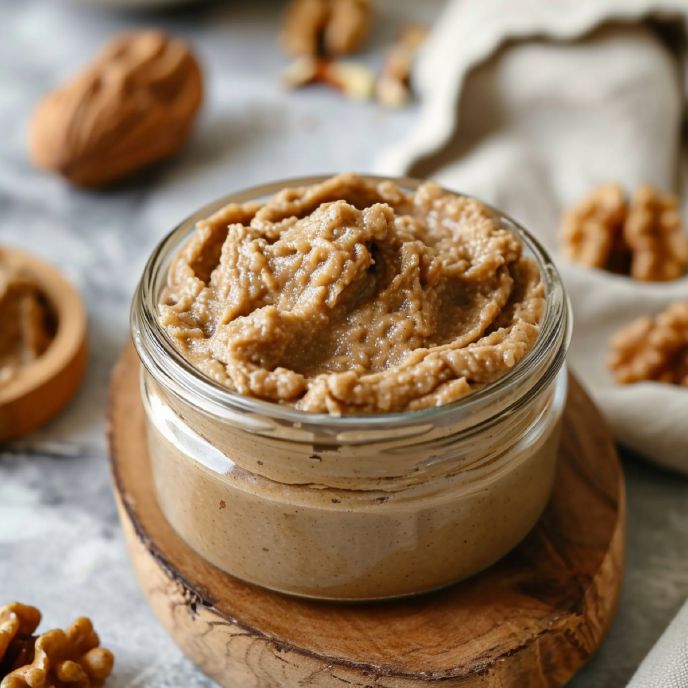
What You’ll Need
Like most nut butter recipes, this one calls for just a few key ingredients. I have some recipe variations below if you want to jazz it up.
But here’s the simple recipe:
- Walnuts: Walnuts are, obviously, the star of this recipe. Rich in omega-3 fatty acids, antioxidants, and protein, they create a creamy and nutritious spread.
- Sea Salt: Just a pinch to enhance the natural flavors of the walnuts. It acts as a flavor balancer, offsetting any bitterness and highlighting the butter’s nutty taste.
- Honey: Though optional, honey adds a touch of natural sweetness to the walnut butter. It complements the nuts’ rich flavor and can make the spread more palatable, especially for those who might find plain walnut butter too intense.
- Coconut Oil: Another optional ingredient - you may not need it. But sometimes, you need just a touch to help make the butter smooth.
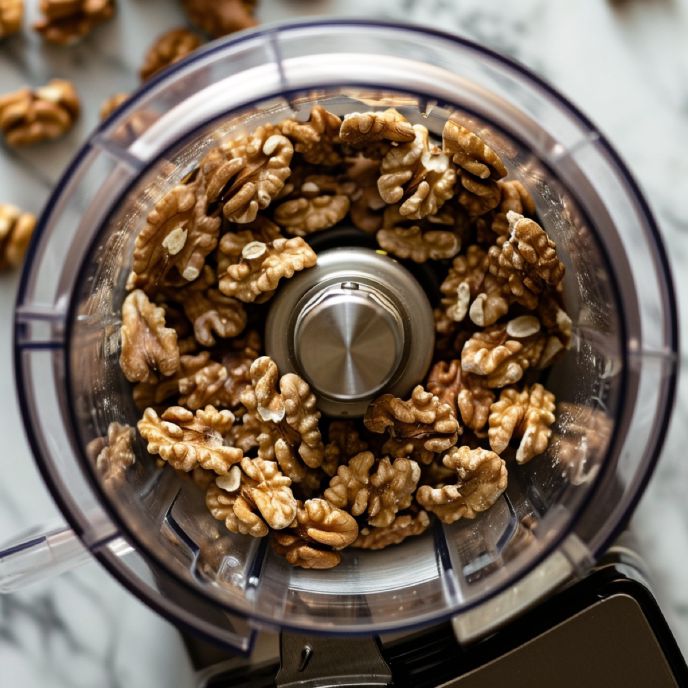
How to Make Homemade Walnut Butter
You can just pop the nuts in a food processor and let it do its thing. But I have an extra step that’s vital for the taste of your walnut butter.
1. Preheat the oven and toast the walnuts on a baking sheet until fragrant.
2. Transfer the nuts to a food processor when cool and pulse to break them apart.
3. Process the nuts on low until smooth, stopping every minute or so to let the machine cool.
4. Add the sea salt, honey, and coconut oil (if using) and process again until smooth.
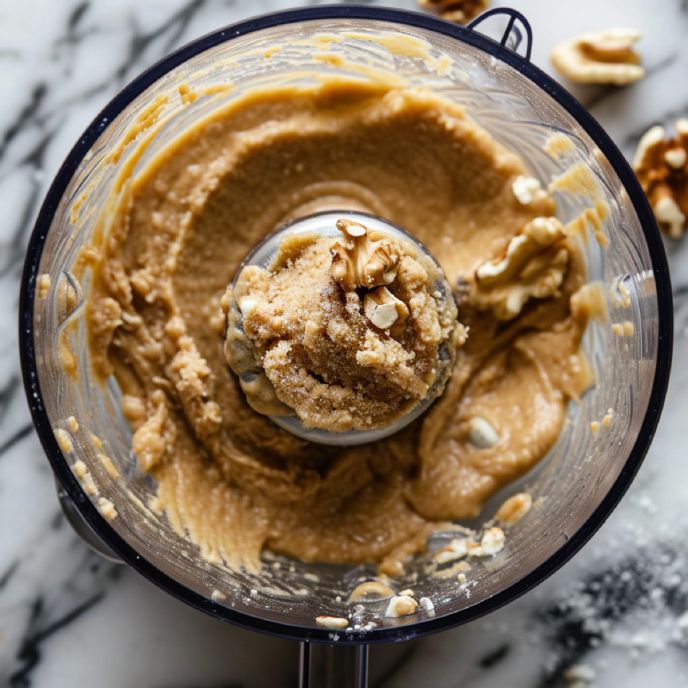
This process could take anywhere from 1-15 minutes. It all depends on the type of food processor you have and how often you need to stop and let it cool.
If you have a decent, powerful appliance, it should be fine to run for 5-10 minutes without needing to stop. But if it feels hot near the motor, turn it off for a few minutes.
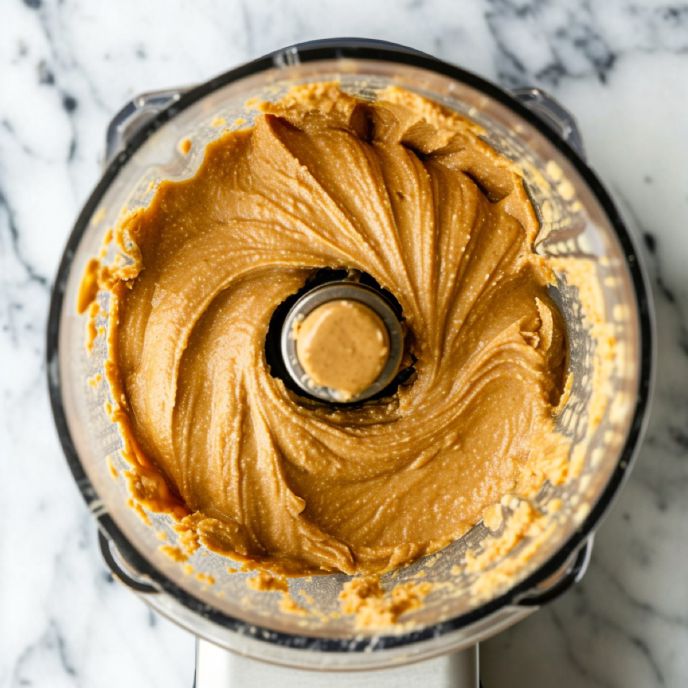
Flavor Variations and Add-ins
So you made the OG recipe and loved it. But now you want more!
I get it. That’s why I’m sharing these fun variations and add-ins:
Sweet Variations
- Maple Cinnamon: Add a tablespoon of maple syrup and a teaspoon of ground cinnamon for a warm, sweet flavor.
- Chocolate: Mix in a tablespoon or two of cocoa powder and a bit of your favorite sweetener for a chocolatey twist.
- Vanilla Almond: Combine a teaspoon of vanilla extract and a handful of almonds for a smooth, nutty taste.
- Protein Powder: Blend in a scoop of your favorite protein powder for an extra protein kick.
Savory Variations
This might seem odd, but try them! You might find your new favorite savory spread!
- Garlic Herb: Blend in a clove of garlic and a teaspoon each of dried basil and oregano for a savory spread. (leave out the honey)
- Spicy Chipotle: Add a small amount of chipotle powder or smoked paprika for a smoky, spicy kick.
- Rosemary Sea Salt: Incorporate fresh or dried rosemary and a pinch more sea salt for a rustic flavor.
Chunky Variations
Want your walnut butter with a bit of bite? I’ve got you covered:
- Mixed Nuts: When it’s smooth, stir in some chopped mixed nuts, like almonds, cashews, or pecans.
- Seeds: Stir in sunflower, pumpkin, or flaxseeds for added texture and nutrients.
- Raisin Cinnamon: Mix in a handful of raisins and a sprinkle of cinnamon for a sweet and spicy combination.
- Dates: Add a few pitted dates to naturally sweeten the butter.
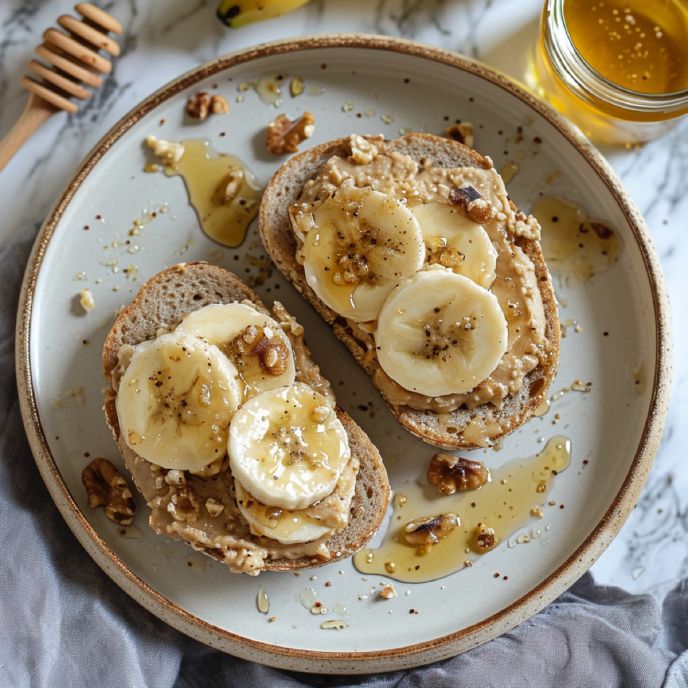
Walnut Butter Serving Suggestions
Wondering what to do with your homemade walnut spread? Don’t fret; there are a ton of fun ways to use it!
- As a Spread: Walnut butter is a delicious spread for bread, toast, bagels, or English muffins. It’s a great alternative to traditional nut butters and offers a unique flavor you’ll love.
- In Smoothies: Add a spoonful of walnut butter to your morning banana smoothie for a nutty finish and boost of protein.
- With Oatmeal or Yogurt: Swirl walnut butter into your morning oatmeal or dollop some in Greek yogurt.
- As a Dip for Fruit: Walnut butter makes an excellent dip for apple slices, bananas, or berries. I like it sweetened in this case.
- In Baking: Take note of your butter’s texture before using it in baking. If it’s thin and runny, it won’t work too well. But if it’s thick and spreadable, it should be great as a peanut butter swap.
- In Salad Dressings: Whisk walnut butter into salad dressings for a creamy and nutty flavor. It pairs well with vinegar and a touch of honey.
- As a Topping for Pancakes or Waffles: Use it as a topping for pancakes, waffles, or French toast, possibly with a drizzle of maple syrup or caramel.
- As a Base for Energy Bites: Mix it with oats, honey, and other ingredients to make no-bake energy bites.
How to Store
Transfer your homemade walnut butter to a clean glass jar with a sealable lid. That way, it’ll last as long as possible.
And ensure the lid seals so it doesn’t absorb any flavors from the fridge.
Keep it in the fridge for up to a month.
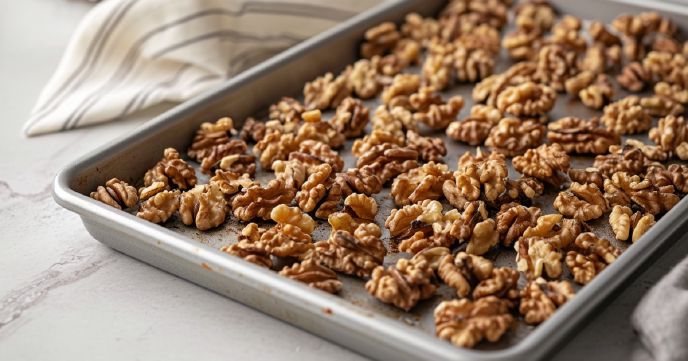
FAQs
What are the best types of walnuts for walnut butter?
The best walnuts for walnut butter are fresh, raw, and unsalted. Choose English walnuts if you prefer a milder flavor, or go for black walnuts if you prefer a strong, earthy taste.
How can I achieve the right consistency for walnut butter?
To achieve a smooth consistency, blend the walnuts in a powerful food processor. Start on a low and gradually increase the speed to medium. Patience is key. But if it’s not turning smooth, add a small amount of oil.
Can I make walnut butter without added sugars?
Homemade walnut butter doesn’t need added sugars. The natural oils and flavors of the walnuts provide a rich taste. I like it with honey or maple syrup, but they’re optional.
Do I need to roast the walnuts before making butter?
Roasting is optional. Raw walnuts will create a softer, more earthy butter, while roasted walnuts have a deeper, more intense flavor.
Can I make walnut butter in a regular blender?
Yes, but it might take longer, and you’ll need to scrape down the sides frequently. Food processors are best.
Is walnut butter healthy?
Walnut butter is a good source of healthy fats, protein, vitamins, and minerals. But it’s also calorie-dense, so it should be consumed in moderation.
Homemade Walnut Butter
Ingredients:
- 3 cups of raw walnuts
- 1/4 teaspoon of sea salt
- 2 tablespoons of honey or maple syrup
- 2 tablespoons of coconut oil
Method:
- Preheat the oven to 175°C (350°F) and spread the walnuts evenly on a baking tray.
- Toast the nuts for 5-10 minutes, gently tossing them halfway through.
- Take the nuts out of the oven and leave to cool.
- Place the cooled nuts into a food processor and pulse a few times to break them apart.
- Blend on low for 1-2 minutes, stop the machine, then scrape the sides.
- Blend on medium for 1-2 minutes, stop the machine, then scrape the sides.
- Blend on high until smooth (stop if the machine feels warm).
- Add the salt, honey, and coconut oil (if using), and blend to smooth.
